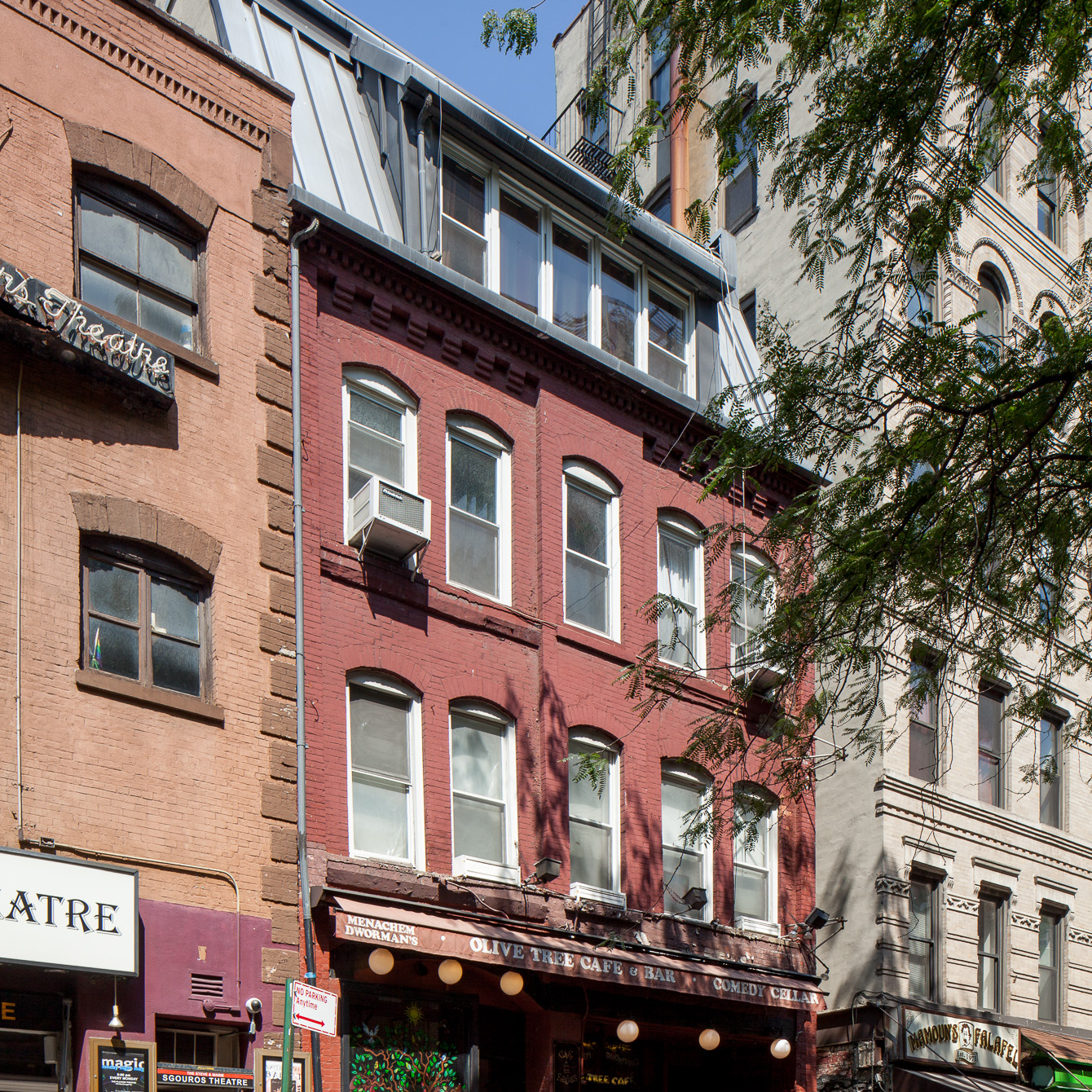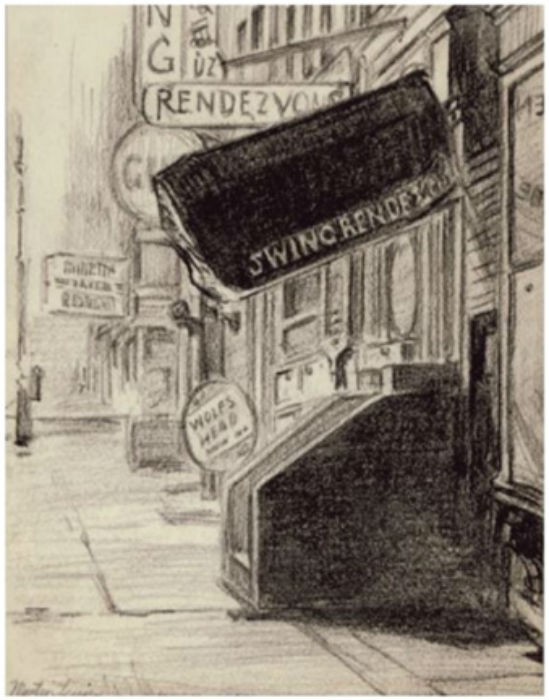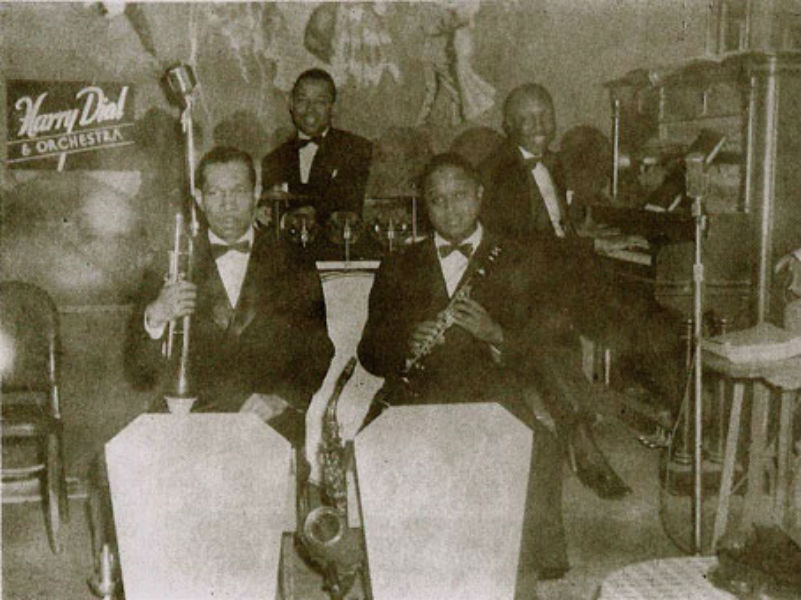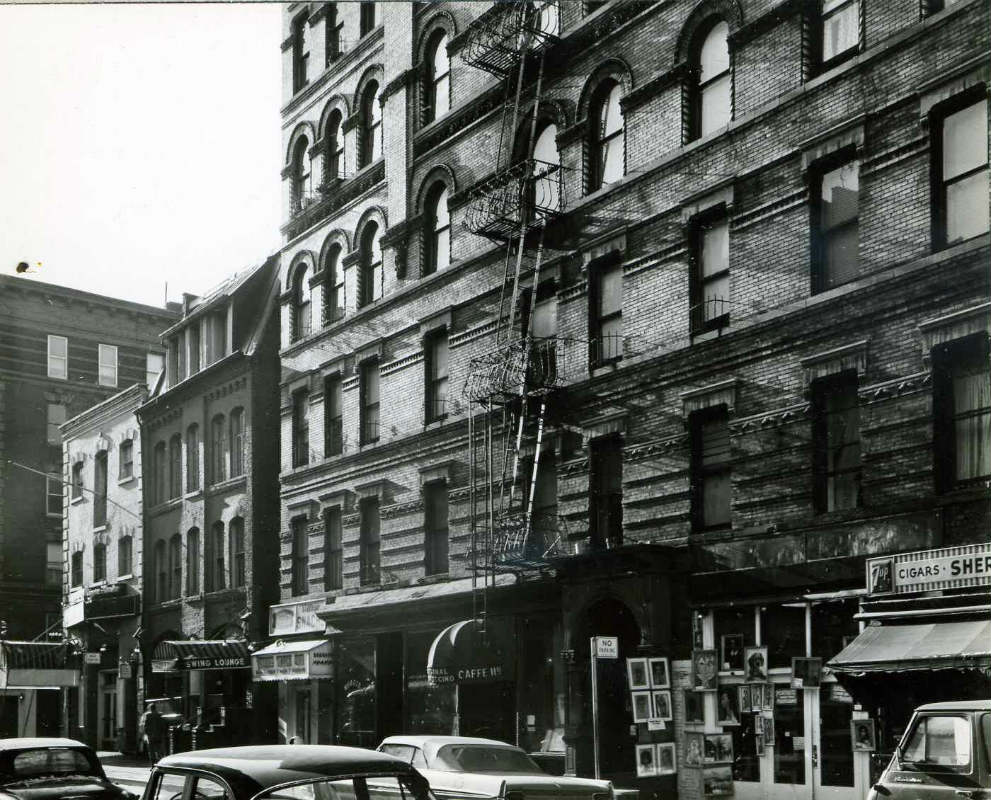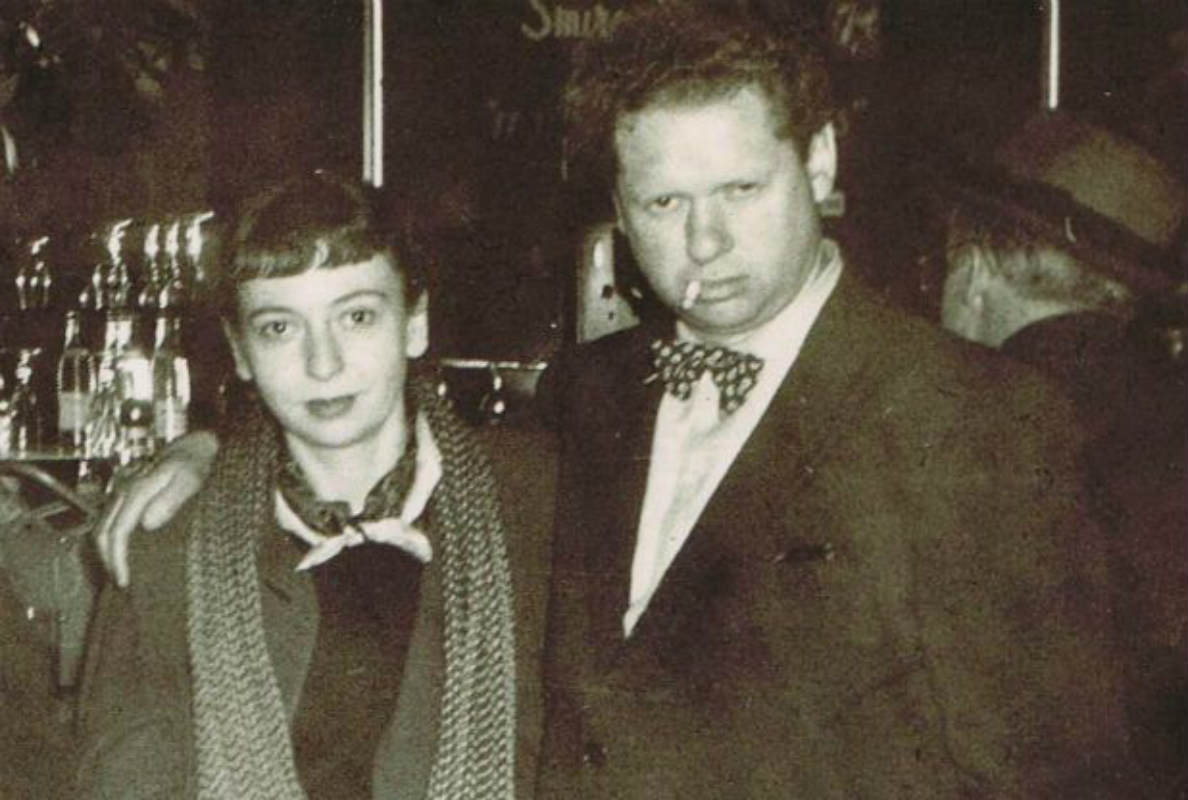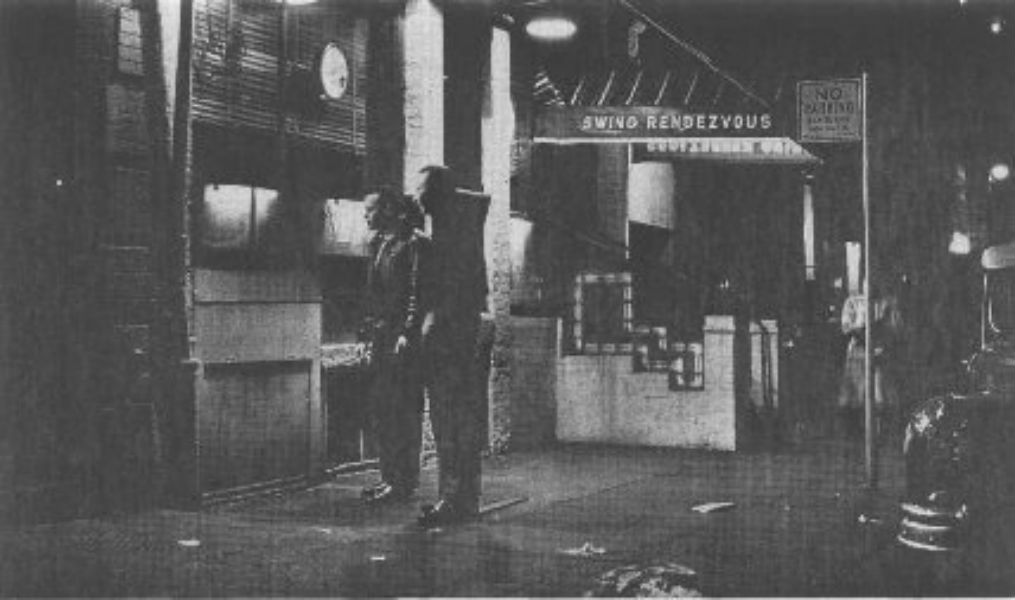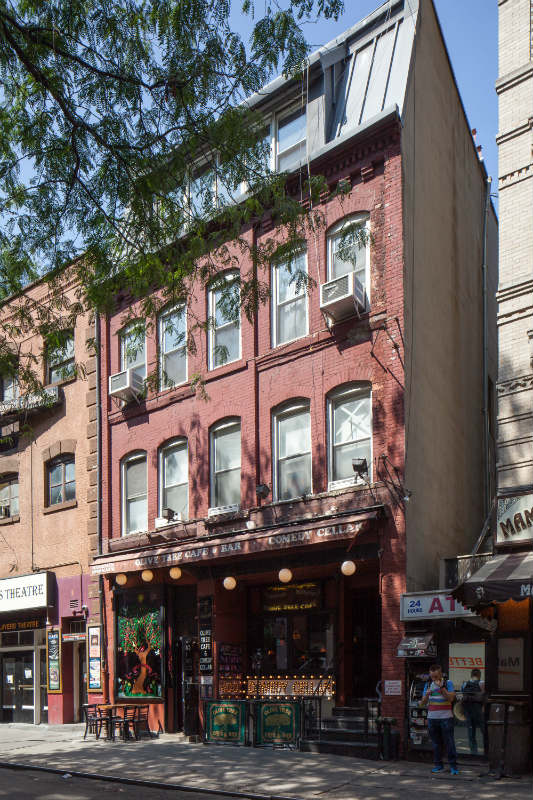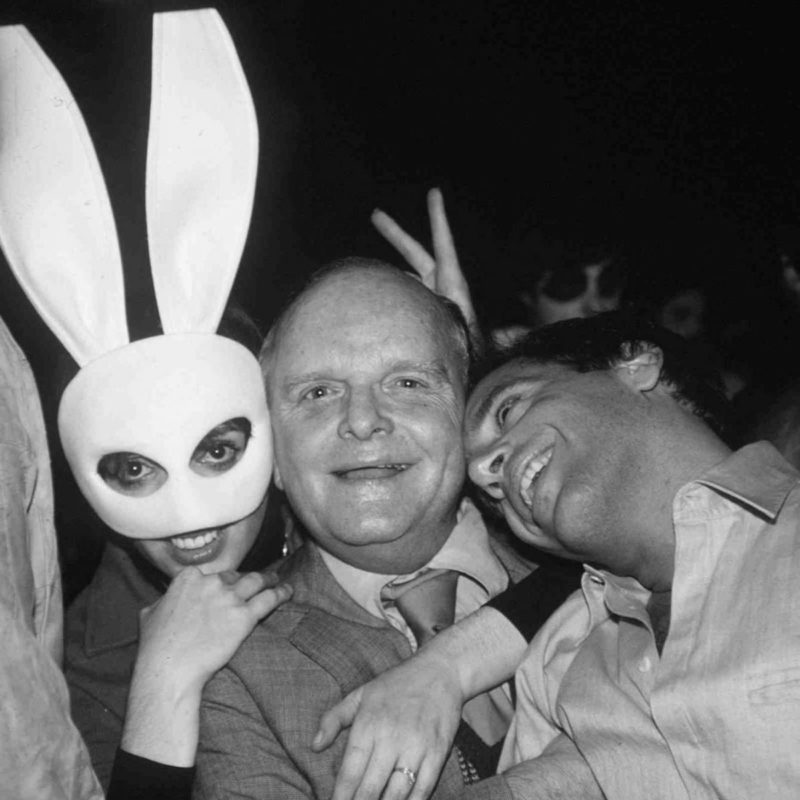overview
The Swing Rendezvous was a jazz club and lesbian bar that was open from 1938 to 1965.
Among the bar’s notable patrons were writer and activist Audre Lorde and Kitty Genovese, who met her girlfriend here a year before her murder made her a symbol of bystander apathy.
History
The Swing Rendezvous, also known later as the Swing Lounge, or simply the Swing, opened in 1938 as a jazz club with live performances. At some point, probably in the early 1950s, it morphed into a venue that served a mostly lesbian clientele until it closed in 1965. Like most bars serving the LGBT community at the time, it likely had mob ties and was frequently raided by the police. The Swing had a lively bar area and small dance floor. The bar was far from fancy and attracted a mostly white, working class crowd.
The Swing had a long wooden bar scored with more initials than a grade-school desk, vinyl platters playing on the PA, multicolored scrims shading the lightbulbs overhead, women of all shapes and sizes crowding the dance floor.
Among the women who met here were Kitty Genovese and her girlfriend Mary Ann Zielonko. Zielonko recalled that Genovese’s dancing skills attracted people’s attention. Soon after they met, they moved in together at an apartment building in Queens. In 1964, a year after they first drank and danced at the Swing Rendezvous on March 13, 1963, Genovese was brutally murdered near their home, the news of which made her a symbol of bystander apathy.
White working class lesbians in the 1940s-60s mostly adhered to butch/femme gender roles, and regarded those who acted and dressed outside of those roles as suspicious, partly because undercover cops who did know such “rules” were often trying to infiltrate the bars. The butch/femme lesbians called lesbians who did not dress and act by the rules “kiki” or “ky-ky.” As Black activist and writer Audre Lorde described, “For the regulars at the [Sea] Colony and the Swing we were Ky-Ky girls because we didn’t play roles.” Lorde had an extra layer of difficulty fitting in to Greenwich Village lesbian bar culture at the time because most people in the bars, staff and patrons alike, discriminated based on race, despite their own minority status as lesbians.
Entry by Gwendolyn Stegall, project consultant (September 2018).
NOTE: Names above in bold indicate LGBT people.
Building Information
- Architect or Builder: Unknown
- Year Built: c. 1864
Sources
Audre Lorde, Zami: A New Spelling of My Name (New York: Crossing Press, 1982). [source of Lorde quote]
Jean-François Pitet, “Earres Prince, the Pianist Cab Never Appreciated,” The Hide Ho blog (April 23, 2008), bit.ly/2MVRQcx.
Kevin Cook, Kitty Genovese: The Murder, the Bystanders, the Crime that Changed America (New York: W. W. Norton & Company, 2014). [source of pull quote]
“Lost Womyn’s Space: Swing Rendezvous,” Lost Womyn’s Space blog (September 12, 2011), bit.ly/2N03Ppi.
New York City Directories (1938-1965).
“Night Clubs-Vaude: Burlesque Bits,” The Billboard, March 17 1951, 20.
“Night Clubs-Vaudeville: Acts-Units-Attractions-Routes,” The Billboard, March 13, 1943, 17.
Do you have more information about this site?
This project is enriched by your participation! Do you have your own images of this site? Or a story to share? Would you like to suggest a different historic site?
